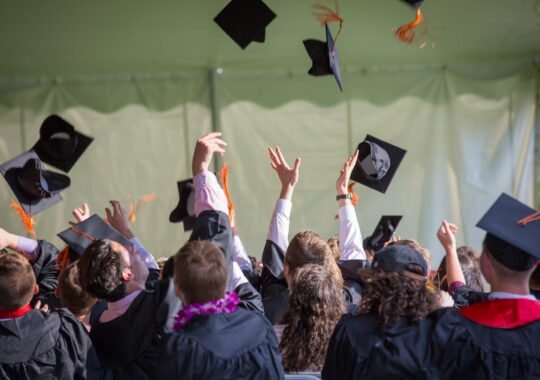Table of Contents
- The Foundational Importance of Arts in Education
- Cognitive and Emotional Benefits
- Enhancing Creativity and Critical Thinking
- Art and Music as Tools for Cultural Awareness
- The Role of Technology in Modern Arts Education
- Encouraging Inclusion and Diversity through Arts
- How Teachers Can Foster Artistic Growth
- Future Trends in Arts Education
The Foundational Importance of Arts in Education
Arts are not merely an adjunct to formal schooling but a core component of comprehensive education strategies. The arts, including visual arts, music, dance, and drama, contribute to the cultivation of essential life skills. They foster creativity, collaboration, and communication, attributes necessary for success in any field. Historically, integrating arts in education has enriched learning environments, making them more engaging and enjoyable for students.
According to numerous educational studies, students who participate in arts-integrated curricula exhibit improved academic performance in other subjects. An arts-rich education promotes active learning by encouraging students to think outside the box and approach problems from different angles. These benefits are not confined to the classroom but extend into personal growth and development, equipping students with a toolkit for navigating life’s complexities.
Cognitive and Emotional Benefits
The cognitive benefits of arts education are extensive and well-documented. Education systems worldwide have long acknowledged the benefits of the arts in school. Engaging in arts activities significantly boosts memory retention, enhances concentration, and sharpens analytical abilities. For instance, learning to play a musical instrument improves pattern recognition and mathematical reasoning, skills that are transferable to STEM subjects.
Emotionally, the arts offer a vital platform for expression and self-discovery. Music, in particular, can evoke robust emotional responses, helping students process their feelings and experiences. This emotional literacy is crucial in developing resilience and empathy, soft skills that are increasingly valued in the workplace. The safe space provided by artistic endeavors allows students to experiment with identity and cultivate self-confidence, leading to a more positive self-image and a healthier, more inclusive school culture.
Enhancing Creativity and Critical Thinking
Creativity is often cited as one of the most valuable attributes in today’s rapidly changing world. Arts education uniquely positions students to develop this skill by engaging them in activities that require originality and innovation. Through painting, design, or musical composition, students learn to construct and deconstruct ideas, fostering a versatile problem-solving mindset.
The critical thinking skills honed through the arts are indispensable. Art-making processes require students to analyze, critique, and iterate on their ideas, training their ability to evaluate situations critically. These skills transfer seamlessly to other academic disciplines. Enhanced creative and critical thinking skills prepare students to tackle complex challenges in their education and future careers, positioning them as leaders in their respective fields.
Art and Music as Tools for Cultural Awareness
The arts foster cultural awareness and sensitivity in an increasingly interconnected world. By studying diverse artistic traditions, students gain insights into the lives and values of people from different backgrounds. This exposure broadens their understanding and instills a sense of appreciation and respect for cultural diversity.
Integrating global arts into school curricula promotes a more inclusive learning atmosphere. By engaging with art forms that may be unfamiliar to them, students develop a more global perspective, learning to value differences while celebrating commonalities. Cultural education through the arts encourages students to become globally aware citizens with the empathy and understanding needed to thrive in multicultural societies.
The Role of Technology in Modern Arts Education
Technology has transformed the landscape of arts education, offering novel ways to create, access, and experience art. Digital platforms enable students to engage in art creation beyond traditional mediums, offering tools for digital painting, animation, and music production. These platforms allow students to collaborate and share their work globally, enhancing cross-cultural artistic exchange.
While technology offers vast opportunities, balancing these with traditional techniques is crucial for a well-rounded arts education. Schools must strive to create hybrid learning environments that combine digital and physical resources, as suggested by current innovative approaches in arts education. This approach caters to diverse learning preferences, ensuring all students can access and benefit from arts education.
Encouraging Inclusion and Diversity through Arts
Arts education is uniquely positioned to promote inclusion and diversity within schools. By including a variety of artistic traditions and practices, educators can help create a learning environment that reflects the richness of different cultures. This inclusive approach encourages students from various backgrounds to participate in and contribute to the arts.
Ensuring all students have access to arts education regardless of their circumstances is critical to fostering a diverse and inclusive school culture. Arts programs designed to accommodate students with disabilities exemplify the inclusive potential of arts education. Educators can build a more equitable and harmonious school community by facilitating self-expression and understanding through the arts.
How Teachers Can Foster Artistic Growth
Teachers play a crucial role in nurturing students’ artistic growth and development. Educators can help students discover their creative potential and develop a lifelong appreciation for the arts by creating an environment that encourages exploration and curiosity. Implementing interdisciplinary projects incorporating art into various subjects can enrich learning experiences, making them more engaging and meaningful.
Supportive teachers can tremendously impact students’ artistic journeys by inspiring a passion for the arts. Simple practices, such as providing constructive feedback or connecting students with local artists, can ignite creativity and boost confidence. Success stories from dedicated art educators highlight the importance of teacher commitment and creativity in fostering students’ love for the arts.
Future Trends in Arts Education
As education evolves, arts education will likely incorporate emerging technologies and global perspectives to remain relevant. Future curricula may see an increase in interdisciplinary approaches that merge art and science, cultivating innovative problem-solving skills applicable across all disciplines.
Potential innovations in arts education, such as virtual reality art experiences and AI-driven creation tools, promise to redefine how students engage with the arts. These advancements will offer fresh opportunities for creativity while maintaining the core values of fostering well-rounded, empathetic, and culturally aware individuals. As these trends unfold, the vibrant role of arts education in schools will continue to thrive, shaping future generations to think creatively and approach challenges confidently.





